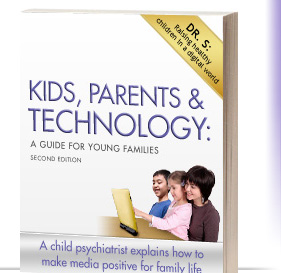Keywords: child, brilliant invention works, underlie later play, new unknown places, basic separation-individuation process
Kids can really teach us a lesson or two about inventiveness. Many kids the world over come up with amazing things, but that most special toy comes early. It can be a stick, it can be a blanket (or its tired threadbare remnant), a Teddy bear, thumb sucking, and, these days, it can also be an iPad.
Here is how the child’s brilliant invention works: The child chooses something—usually a soft and cuddly object, but it can be anything he can hold and feel. He then endows it with magical qualities especially to give a sense of safety and calm, like Mother. Now—presto—he has his own exclusive companion that protects and supports anywhere, anytime, unlike Mother, who sometimes disappears.
The child may bestow it with a name that shows how stable, special, and unique among all other objects in the child’s world it is. She carries this new companion for comfort, support, safety, and soothing, vigilantly keeping track of it and counting on it to reassure and calm her when she is upset. She guards and treasures it, as she takes it everywhere. It enables her courage when facing the mysteries and dangers of the dark night. Clutching it, she peacefully drifts into sweet sleep. It also fortifies daytime explorations into new unknown places. Some children, as they get older, invent imaginary friends in the same way, and these special creatures can have magical abilities.
Later, as her brain centers mature, she realizes that Blankie is not a living thing, but she still needs its magical powers and is able to suspend that reality and live with the contradiction.
The child may keep this magical invention indefinitely—through college or even later, or at least in her memory, and continue to draw a special comfort from it. I have commonly witnessed this in my practice even in nostalgic septuagenarians.
In addition to helping the basic separation-individuation process, it provides opportunities to develop and practice other important human qualities as life goes on. It is the child’s major creation, and she fully owns it. She will repeat this many times in many forms over a lifetime, but it is most dramatic when it first appears in early childhood. It later evolves into a complex and rich part of human life.
This experience is probably many children’s first major encounter with the specialness of imaginative play. The child’s abilities to partially suspend reality, form a meaningful system of perception, action, thought and feeling, and use a fantasy symbol to make herself feel safer, underlie later play, creativity, and appreciation of others’ creations, and the ability to imagine a future and plan for it.
Many people have not seen this in their kids nor in their own lives, and there is little science about it. I have personally not found any differences between those that had this experience and those who had not.
And now, we also have remote controls, cellphones, and interactive screens of many sizes.
And soon we will have Crib Robots.
What do you think?



THAT SPECIAL INFANT TOY, THE IPAD
Kids can really teach us a lesson or two about inventiveness. Many kids the world over come up with amazing things, but that most special toy comes early. It can be a stick, it can be a blanket (or its tired threadbare remnant), a Teddy bear, thumb sucking, and, these days, it can also be an iPad.
Here is how the child’s brilliant invention works: The child chooses something—usually a soft and cuddly object, but it can be anything he can hold and feel. He then endows it with magical qualities especially to give a sense of safety and calm, like Mother. Now—presto—he has his own exclusive companion that protects and supports anywhere, anytime, unlike Mother, who sometimes disappears.
The child may bestow it with a name that shows how stable, special, and unique among all other objects in the child’s world it is. She carries this new companion for comfort, support, safety, and soothing, vigilantly keeping track of it and counting on it to reassure and calm her when she is upset. She guards and treasures it, as she takes it everywhere. It enables her courage when facing the mysteries and dangers of the dark night. Clutching it, she peacefully drifts into sweet sleep. It also fortifies daytime explorations into new unknown places. Some children, as they get older, invent imaginary friends in the same way, and these special creatures can have magical abilities.
Later, as her brain centers mature, she realizes that Blankie is not a living thing, but she still needs its magical powers and is able to suspend that reality and live with the contradiction.
The child may keep this magical invention indefinitely—through college or even later, or at least in her memory, and continue to draw a special comfort from it. I have commonly witnessed this in my practice even in nostalgic septuagenarians.
In addition to helping the basic separation-individuation process, it provides opportunities to develop and practice other important human qualities as life goes on. It is the child’s major creation, and she fully owns it. She will repeat this many times in many forms over a lifetime, but it is most dramatic when it first appears in early childhood. It later evolves into a complex and rich part of human life.
This experience is probably many children’s first major encounter with the specialness of imaginative play. The child’s abilities to partially suspend reality, form a meaningful system of perception, action, thought and feeling, and use a fantasy symbol to make herself feel safer, underlie later play, creativity, and appreciation of others’ creations, and the ability to imagine a future and plan for it.
Many people have not seen this in their kids nor in their own lives, and there is little science about it. I have personally not found any differences between those that had this experience and those who had not.
And now, we also have remote controls, cellphones, and interactive screens of many sizes.
And soon we will have Crib Robots.
What do you think?
Excerpted from p. 145 of Kids, Parents & Technology: A Guide for Young Families
Article by Eitan ‘Dr. S®’ Schwarz, MD
©All rights reserved